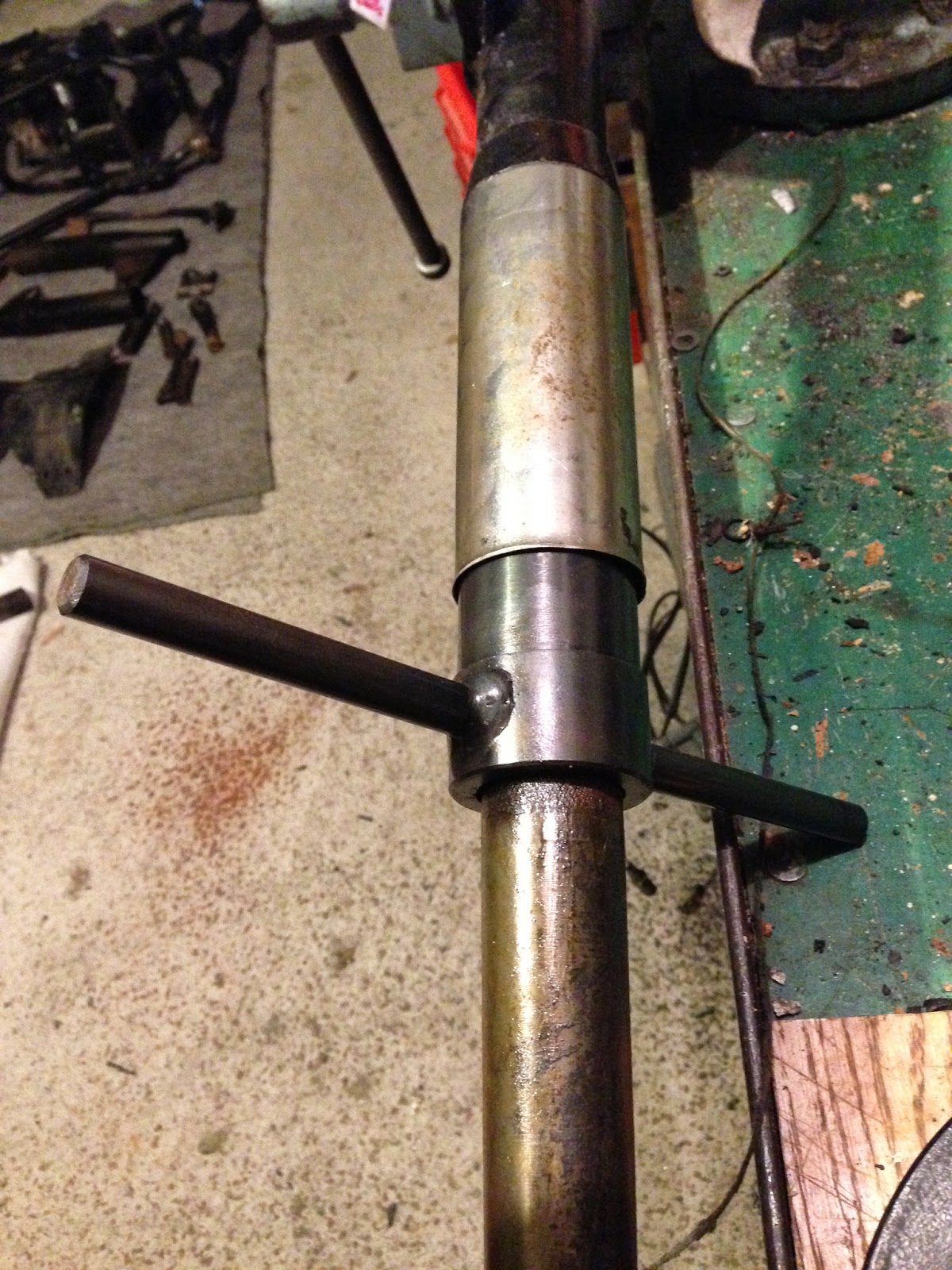A Few Repairs
Fortunately, using the Rupert Ratio frame checking method, the frame proved to be straight. However, a few minor repairs were still necessary.The bike is a single seater and should not have rear foot rests. In a previous post I showed how some foot rests had been crudely welded on to the swing arm. These were cut off and the remaining weld was carefully ground away.
 |
| Non Standard Fitments. |
 |
| The swing arm repair can be seen here. |
The frame itself had a broken weld where the rear brake pedal bush had come away from the frame. This manifested itself in a sloppy rear brake pedal. A quick trip to a local metal fabrication specialist had it better than new.
A Simple Frame Stand
Before starting the frame preparation (see below) I decided that the frame should be supported in some way. I decided to construct a simple frame stand using a Black & Decker Workmate. This involved fabricating two alloy brackets and bolting them to the Workmate using the predrilled holes. By positioning the brackets in line with the foot peg studs on the frame the Workmate can be adjusted to secure the frame firmly with the alloy preventing any thread damage.
 |
| Makeshift Clamp |
 |
| Alloy Brackets Attached to the Workmate |
Painting
With the frame repaired it was time to start the preparation for painting. I decided that I would do this by hand rather than sand blasting as the frame was in reasonably good condition. It has always been my intention to spray the cycle parts with a cellulose paint rather than applying a powder coat finish.Manually preparing the frame turned out to be very challenging indeed an soaked up many hours of effort. However, the results have been worth it and a few pounds have been saved along the way.
It was interesting to see just how simple the original paint finish was, it appeared to be a single coat of black painted directly onto the bare metal. Its hard to criticise this though as 49 years later it is still in fairly good condition.
 |
| Start of the Preparation |
The frame was prepared in stages and at each stage the prepared area was immediately spayed with a metal primer.
 |
| A Coat of Primer to Protect the Frame |
Once the frame is complete, the remaining cycle parts will be tackled.










